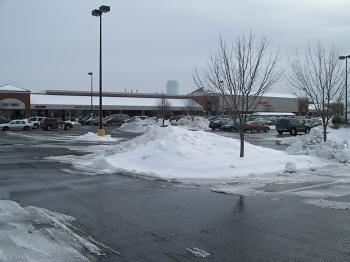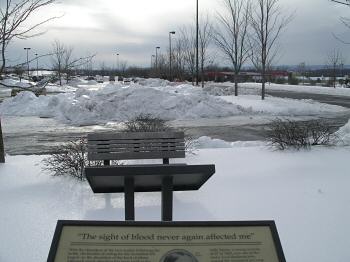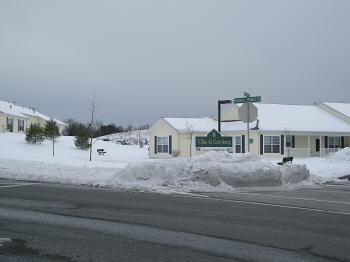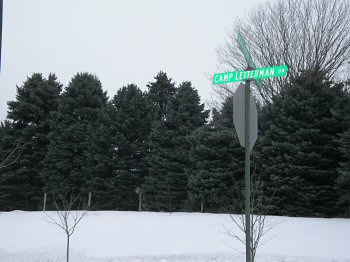|
Camp Letterman was once the largest
field hospital ever built in North America. Camp Letterman General
Hospital near Gettysburg, was chosen for on the George Wolf Farm, east of
Gettysburg on the York Pike. The farm was near the main road and the
railroad where a depot was established. Trains would deliver a supplies
for the Gettysburg camp and take recovering patients to permanent
hospitals in Philadelphia, Baltimore and Washington. It was ready by
mid-July and had a small army of surgeons, nurses, cooks, quartermaster
and supply clerks while a detachment of infantry acted as camp guards to
look after supplies and wounded Confederate prisoners. 1,200 men were
buried on site at Camp Letterman. All traces of the camp are gone except
for a small section in a Giant Foods parking lot. Union dead in the camp
graveyard were removed to the Soldiers National Cemetery in 1864 and
southern remains were exhumed in the 1870s for relocation to southern
cemeteries.
Over 30,000 soldiers of both armies lay wounded in temporary field
hospitals at the close of the Battle of Gettysburg. In every sense of the
word, these were not real hospitals at all, but private homes and
buildings which afforded some shelter and a nearby source of water. Every
barn, church, warehouse, and outbuilding within a ten mile radius of
Gettysburg was filled with suffering men, so many that they could not all
be attended to at once. Surgeons from the various regiments worked for
days without rest to treat the wounded and medical supplies were hurried
to the scene as rapidly as possible. Still, many soldiers went without
care or treatment for several days. "Houses and barns, but chiefly the
woods were used as hospitals and the wounded, necessarily endured much
suffering," wrote Dr. Jonathan Letterman. As the Medical Director of the
Army of the Potomac, Dr. Letterman and his staff had an overwhelming job
ahead of them. Before the battle ended, Dr. Letterman ordered more medical
supplies to be brought to Gettysburg and he sent his ambulance corps over
the field to move the wounded into a more central medical stations called
corps hospitals. Dr. Letterman was forced to leave Gettysburg with the
army in the pursuit of the Confederates, but he assigned Surgeon Henry
James to the task of supervising the gathering and treatment of all the
wounded in the area.
The first task was gathering all of the wounded into central field
hospitals where adequate water supplies could be found, treatment could be
rendered and wounds dressed. Further surgery could also be performed at
these hospitals until the wounded could be taken to Gettysburg where they
could be transported by railroad to hospitals in Philadelphia, Baltimore
and Washington. A central hospital was established on the York Pike east
of Gettysburg and near the railroad and named Camp Letterman after Dr.
Letterman. Wounded soldiers were taken from the field hospitals by
horse-drawn ambulances to the new camp where they were housed in large
canvas tents. Unlike the rigors of a field hospital, the new camp had cots
with clean sheets and pillows. Nurses were assigned to each of the tents
and surgeons stayed busy around the clock treating the more serious cases.
Food was plentiful and the camp was remarkable for its sanitation. Cases
considered too serious to move remained at the camp while an average of
800 men per day were shipped by rail to hospitals in northern cities.
By August 7, 1863 all of the corps and field hospitals were closed and
Camp Letterman was the only hospital remaining with over 3,000 patients.
Union and Confederate wounded were both treated at the camp by army
doctors and personnel of the United States Christian Commission and the
United States Sanitary Commission. Still, not all of those wounded men
could be saved and many died from the results of their wounds or
infection. A cemetery was established near the camp and burials took place
every day. The camp remained at Gettysburg until November 1863 when the
last remaining patients left, the tents were packed, and the doctors and
nurses left for other battlefield hospitals. |



